Chambal Wildlife Sanctuary, also known as the National Chambal Sanctuary, is a protected area along the Chambal River, which flows through Madhya Pradesh, Rajasthan, and Uttar Pradesh. Covering an area of about 5,400 square kilometres, this sanctuary is renowned for its rich biodiversity and conservation efforts, particularly for the critically endangered Gharial (a type of crocodile) and the Gangetic Dolphin. Chambal Wildlife Sanctuary offers a unique landscape of ravines and rivers, making it a tranquil destination for nature lovers, wildlife photographers, and those seeking a peaceful retreat from city life.
Chambal Wildlife Sanctuary Location
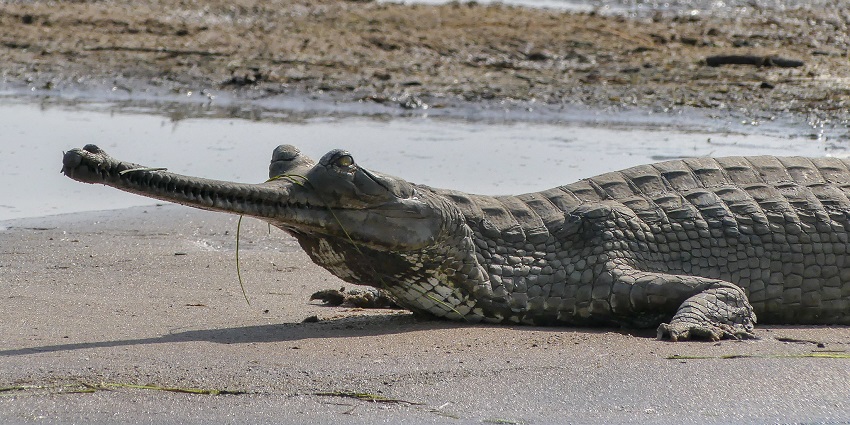
Photo: Mike Prince / Wikimedia Commons
Chambal Wildlife Sanctuary is located along the Chambal River, spreading across Madhya Pradesh, Rajasthan, and Uttar Pradesh. The sanctuary’s closest town is Kota in Rajasthan, and it is approximately 70 kilometres from Agra, Uttar Pradesh.
Suggested Read: Rani Durgavati Wildlife Sanctuary
How To Reach Chambal Wildlife Sanctuary
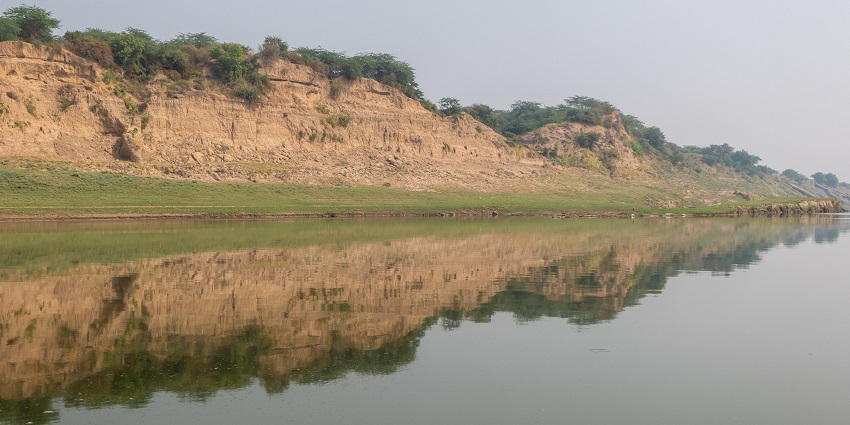
Photo: Mike Prince / Wikimedia Commons
By Air: The nearest airport to Chambal Wildlife Sanctuary is Agra Airport (AGR), located about 70 kilometres away. From Agra, visitors can hire a taxi or use local transport to reach the sanctuary, a journey that takes around 2 hours.
By Rail: The closest railway station is Dholpur Railway Station, located about 20 kilometres from the sanctuary. Regular trains connect Dholpur to major cities like Delhi, Agra, and Jaipur. From Dholpur, visitors can hire a taxi or use local buses to reach the sanctuary.
By Road: Chambal Wildlife Sanctuary is well-connected by road from cities like Agra (70 km), Kota (120 km), and Jaipur (250 km). Visitors can hire taxis or self-drive, enjoying the scenic drive through rural landscapes and along the Chambal River.
Places To Visit Around Chambal Wildlife Sanctuary
Here’s a list of places to visit around Chambal Wildlife Sanctuary.
1. Bateshwar Temple
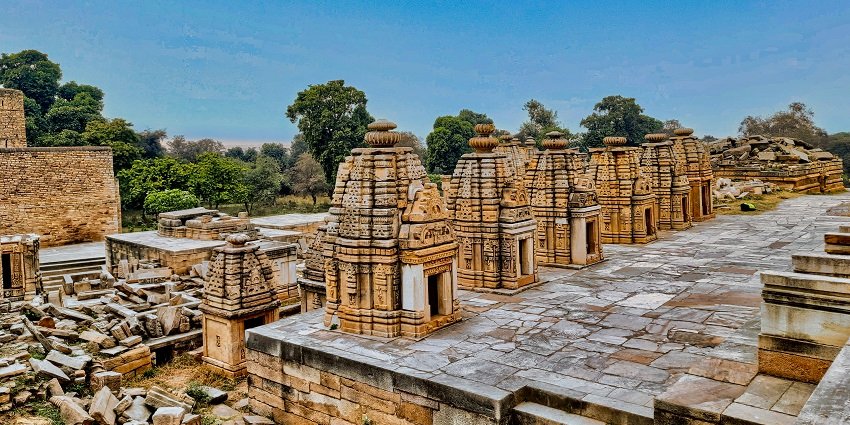
Photo: Ms Sarah Welch / Wikimedia Commons
Bateshwar Temple is located about 40 kilometres from Chambal Wildlife Sanctuary, a complex of more than 100 sandstone temples dedicated to Lord Shiva. These temples, situated on the banks of the Yamuna River, showcase a stunning example of ancient architecture dating back to the 8th century. The temples are scattered across a picturesque landscape of ravines, offering a peaceful and spiritual atmosphere. Visitors can explore the intricate carvings and serene surroundings, making it a perfect spot for history buffs and those looking for a tranquil retreat amidst nature.
Timings: 6 AM – 6 PM
Entry Fee: Free
Suggested Read: Gandhi Sagar Wildlife Sanctuary
2. Ater Fort
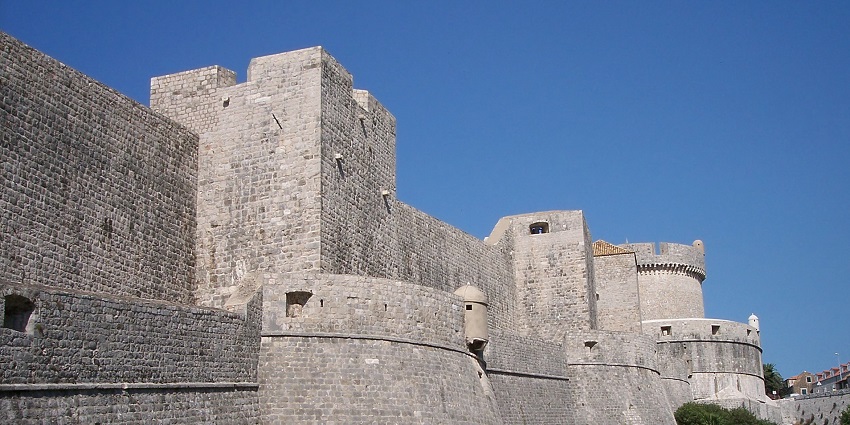
Photo: László Szalai / Wikimedia Commons / Image For Representation Only
Ater Fort is a majestic fortification located around 35 kilometres from the sanctuary, built during the 16th century by the Bhadauria kings. The fort offers a blend of historical significance and scenic beauty, with its elevated position providing stunning views of the Chambal River and surrounding valleys. The fort’s architecture, featuring courtyards, temples, and battlements, offers visitors a glimpse into the region’s royal past. The trek to the fort is adventurous, passing through the ravines and valleys, making it a popular destination for history lovers and trekkers alike.
Timings: 8 AM – 6 PM
Entry Fee: Free
3. National Chambal River Safari
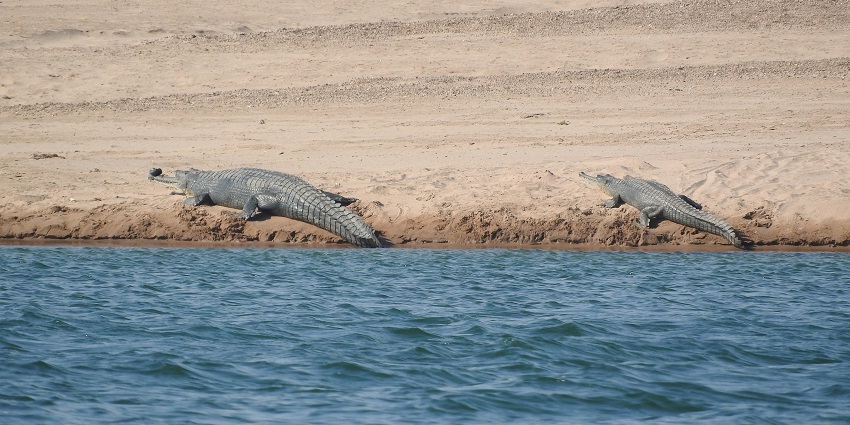
Photo: Hari Mohan Meena / Wikimedia Commons
One of the most exciting activities in the sanctuary is the National Chambal River Safari, which offers visitors a chance to spot the endangered Gharials, Mugger Crocodiles, and Gangetic Dolphins in their natural habitat. The boat safari takes you along the calm waters of the Chambal River, surrounded by ravines and natural beauty. Birdwatchers can also spot various migratory birds, including the Indian Skimmer. The safari is a peaceful yet thrilling experience, allowing visitors to immerse themselves in the sanctuary’s unique biodiversity.
Timings: 7 AM – 4 PM
Entry Fee: ₹600 per person (boat safari)
Suggested Read: Son Gharial Wildlife Sanctuary
4. Ranthambore National Park

Photo: LuisVilla / Wikimedia Commons
Ranthambore National Park in Rajasthan is located about 120 kilometres from Chambal and is one of India’s most renowned wildlife reserves. Known for its population of Bengal tigers, the park offers excellent opportunities for jungle safaris, where visitors can also spot leopards, wild boars, sambar deer, and numerous bird species. The park’s landscape, featuring lakes, forests, and ancient ruins, makes it a favourite among wildlife photographers and adventurers. Ranthambore also houses the Ranthambore Fort, adding a historical dimension to the wildlife experience.
Timings: 6:30 AM – 9:30 AM and 2:30 PM – 6 PM
Entry Fee: ₹1,000 per person (for Indian nationals)
5. Keoladeo National Park

Photo: Anupom sarmah / Wikimedia Commons
About 80 kilometres from Chambal Wildlife Sanctuary, Keoladeo National Park, formerly known as Bharatpur Bird Sanctuary, is a UNESCO World Heritage Site renowned for its rich birdlife. The park is home to over 370 species of birds, including migratory species like the Siberian crane. Visitors can explore the park on foot, by bicycle, or by rickshaw, making it an excellent spot for birdwatchers and nature lovers. The park’s wetlands, grasslands, and forests provide diverse habitats, making it a must-visit destination for anyone interested in biodiversity.
Timings: 6 AM – 6 PM
Entry Fee: ₹75 per person
Suggested Read: National Parks Near Bhopal
Where To Stay
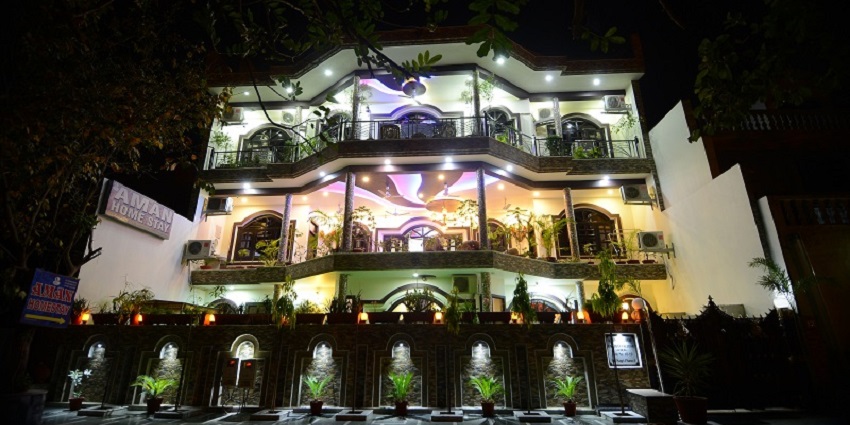
Photo: Faujdaraman / Wikimedia Commons / Image For Representation Only
Visitors to Chambal Wildlife Sanctuary can find a variety of accommodations in nearby towns like Dholpur and Agra. In Dholpur, Chambal Safari Lodge offers eco-friendly cottages with modern amenities, while Raj Niwas Palace provides a more luxurious stay with royal heritage vibes. Agra, located about 70 kilometres away, offers a wide range of hotels and homestays like Aman Homestays, The Oberoi Amarvilas, and Hotel Taj Resort.
Where To Eat
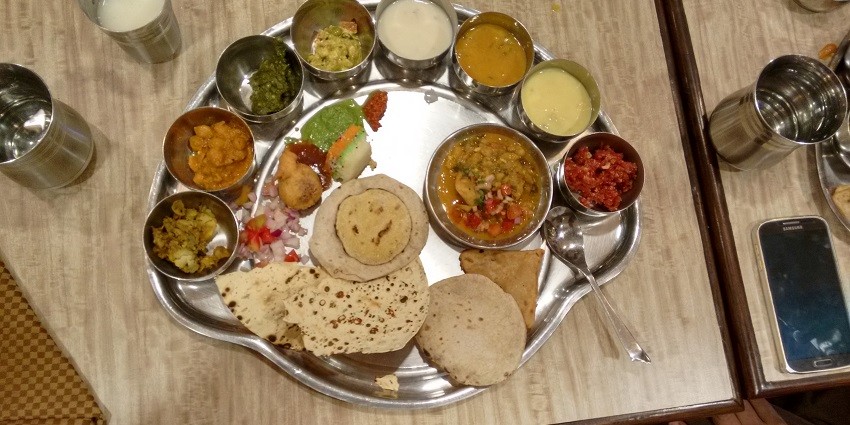
Photo: Rishabhbenganijain / Wikimedia Commons
For dining, visitors can enjoy local Rajasthani and North Indian cuisine at restaurants in Dholpur and Agra. Chambal Safari Lodge serves traditional and organic meals, providing a farm-to-table experience. In Agra, Peshawri at ITC Mughal and Esphahan at The Oberoi Amarvilas offer fine dining options, while Pinch of Spice provides more casual dining with North Indian specialities. Street food enthusiasts should not miss trying Agra’s famous Petha and chaat.
Suggested Read: Best Places To Visit In Indore For Food & Cultural Exploration
Best Time To Visit Chambal Wildlife Sanctuary
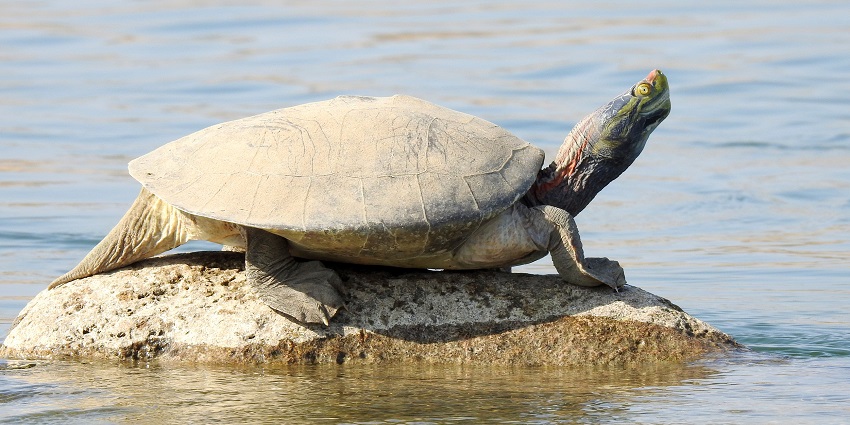
Photo: Hari arcw / Wikimedia Commons
The best time to visit Chambal Wildlife Sanctuary is between November and March, when the weather is cool and pleasant, making it ideal for wildlife safaris and outdoor activities. The summer months, from April to June, can be extremely hot, while the monsoon season, from July to September, sees heavy rainfall, which may affect the accessibility and visibility of wildlife.
Other Factors To Consider

Photo: Hemantkrpali / Wikimedia Commons
Average Cost Of The Trip
The trip cost to Chambal Wildlife Sanctuary is typically between ₹12,000 and ₹20,000 per person, including transport, accommodation, and safari fees. Budget-conscious travellers can opt for guesthouses and local transport. In contrast, mid-range and luxury travellers may prefer to stay in eco-lodges or luxury hotels, adding comfort to their wildlife experience. Boat safaris and guided tours may increase the overall cost but offer a more immersive experience with expert insights into the sanctuary’s biodiversity.
Booking in advance during peak season is advisable, especially for safaris and accommodation, as the sanctuary attracts many tourists during winter. Consider hiring a guide for a richer experience, especially if you’re keen on spotting rare wildlife like the Gangetic Dolphin and Gharial.
Tips For Travellers
- Ensure you have the necessary permits for safaris and entry into the sanctuary, which can be obtained on-site or through online booking.
- Pack light, comfortable clothing for the day, but bring layers for early morning or late evening safaris, as it can get chilly.
- Carry sufficient water, snacks, sunscreen, and a hat, especially during the safari, as facilities may be limited inside the sanctuary.
- Maintain a safe distance from the wildlife and refrain from loud noises that may disturb the animals.
- Consider hiring a local driver or guide to navigate the sanctuary and surrounding areas, as they can provide valuable insights into the wildlife and culture.
- Check with local authorities before clicking photos at Chambal Wildlife Sanctuary.
Suggested Read: Wildlife Sanctuaries In Madhya Pradesh
Chambal Wildlife Sanctuary offers a serene escape into one of India’s most unique and lesser-explored wildlife habitats. Whether spotting the endangered Gharial basking by the river or exploring historical sites like Ater Fort, the sanctuary provides an unforgettable experience for wildlife enthusiasts and travellers alike. Book your Chambal Wildlife Sanctuary tour with TripXL today and discover the natural beauty and diverse wildlife of this remarkable sanctuary.
Cover Photo: John Illingworth / Wikimedia Commons / Image For Representation Only


 WhatsApp
WhatsApp
 Twitter
Twitter









